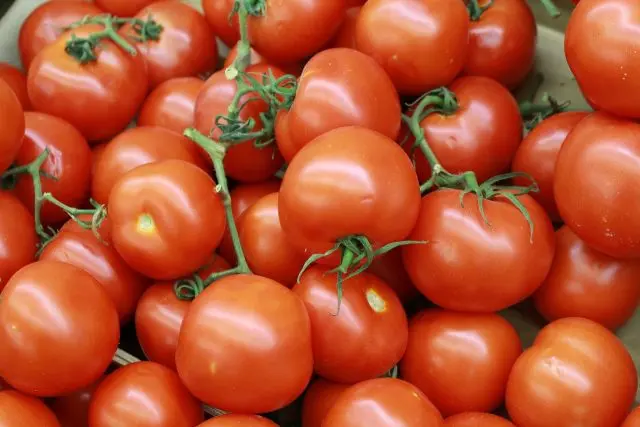Contents
Tomato Volgogradets is a domestic hybrid for planting in various regions of Our Country. It is distinguished by good taste, productivity and presentation of fruits. Tomato varieties Volgogradets are grown in seedlings. Plants are cared for.
Description of the tomato
Tomato varieties Volgogradets bred at the Volgograd Experimental Station. N. I. Vavilov. The hybrid has been on the state register since 1989. It is recommended to grow it in the Central Black Earth region, in the Volga region, in the Urals and the Far East.
The Volgogradets variety is planted on personal plots and on an industrial scale. When grown in the fields, the fruits are harvested once a season by a mechanized method.
Tomatoes of the Volgogradets variety ripen in medium terms. The crop is ready for harvest on the 110th day after germination. The bush is semi-spreading, with a large number of leaves, and medium branching. The plant is stunted, not more than 1 m high.
Volgogradets tomatoes have light green, slightly corrugated leaves of medium size. Plant of determinate type. Inflorescence of simple type. The first buds appear above the 8th leaf, the next – every 1 or 2 leaves.
Description of fruits
According to the description of the variety, photos and reviews, the fruits of the Volgogradets tomato have a number of features:
- rounded shape with slight ribbing;
- bright red color;
- number of nests from 2 to 3;
- weight from 60 to 80 g.
The fruits contain up to 5,3% dry matter and 3,7% sugars. The taste is rated as good. Ripe tomatoes have thick skins.
Tomatoes of the Volgogradets variety have a universal purpose. They are suitable for fresh consumption, salads, snacks, hot dishes. Tomatoes are suitable for whole canning and other preparations.
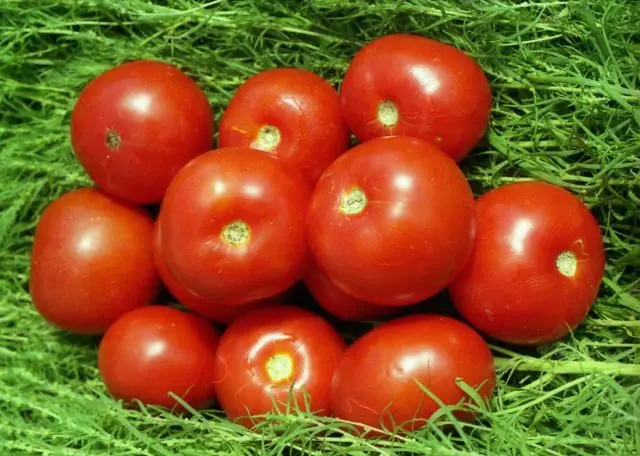
Main characteristics
The hybrid is intended for planting in open ground. In the middle lane, in the Urals and the Far East, tomatoes grow better in a greenhouse.
Fruiting tomatoes Volgogradets begins in the middle. In warm regions, these are the first days of July, in cooler climates – the end of the month. Harvest ripens together.
Productivity is about 11 – 12 kg per sq. m. Each plant brings up to 4 kg of fruit. The quality of the soil, illumination, the flow of moisture and minerals positively affect the yield. The collected fruits are stored without problems at room conditions for 15 days.
Variety Volgogradets is susceptible to late blight, tobacco mosaic virus, blossom end rot, septoria. When growing tomatoes, special attention is paid to agricultural technology and care. They do not allow an increase in humidity in the greenhouse, regularly weed weeds, and timely bring in moisture and fertilizers.
Dangerous pests of tomatoes of the Volgogradets variety are a bear, aphids, spider mites. Folk remedies are used against insects: wood ash, tobacco dust, wormwood infusion. Chemical preparations are also used – Aktellik and others.
Advantages and disadvantages
Advantages of Volgogradets tomatoes:
- universal purpose;
- good taste;
- high yield;
- transportability and keeping quality;
- compact size.
Disadvantages of the Volgogradets variety:
- susceptibility to diseases;
- need for pest control.
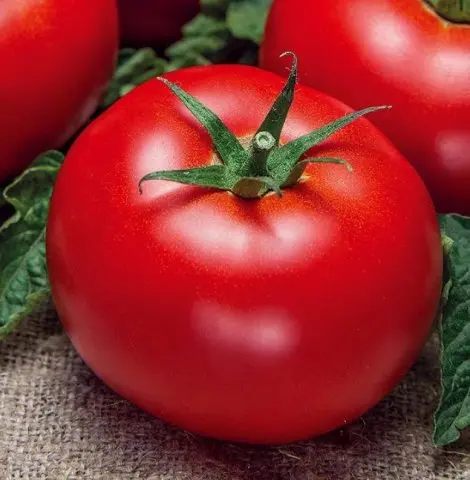
Rules of landing and care
For growing Volgogradets tomatoes, it is important to follow the rules of planting and care. First, tomato seedlings are obtained, which are transferred to open ground. During the growing season, the plants are watered and fed, the soil is mulched with humus.
Seeding for seedlings
Landing work begins in March or April. The soil for tomatoes is prepared independently or they buy a ready-made substrate in the store. If the soil is taken from the site, then first it is kept for 3 months in the cold in order to destroy pathogens and pest larvae. For disinfection, the soil is also placed in a heated oven for 20 minutes.
Containers 10-12 cm high are prepared for Volgogradets tomatoes. Containers with a volume of 1-2 liters are taken for picking. Pots are washed with warm soapy water. Be sure to provide holes for moisture removal.
The containers are filled with soil and furrows 1 cm deep are made on the surface. Tomato seeds are placed in them. Leave 2-3 cm between plants. A thin layer of earth is poured on top and plantings are watered abundantly. Then they cover the containers with glass or film and transfer them to a warm and dark place. For cultivation in peat tablets, 1-2 seeds are placed in each.
Air temperature affects seed germination. The higher its value, the faster the sprouts will appear. Periodically turn the film over and remove the condensate. On average, seedlings appear after 10-14 days.
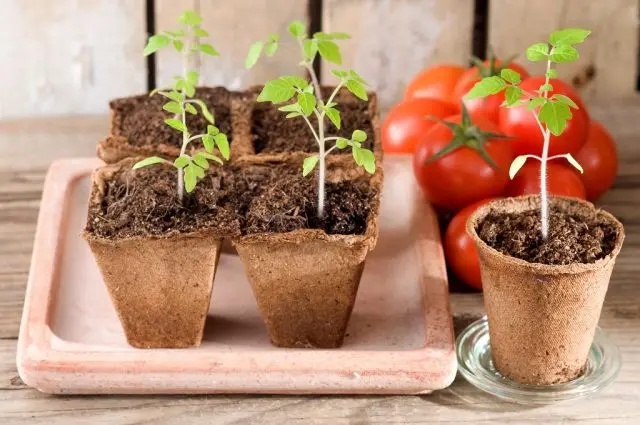
Containers with seedlings of the Volgogradets variety are rearranged on the windowsill. With a lack of natural light for 12 – 14 hours, phytolamps are turned on above the plants. The room with tomatoes is constantly ventilated. Seedlings are watered 1 – 2 times a week when the soil begins to dry out.
When the seedlings have the 2nd – 3rd leaf, they start picking. Plants are distributed in larger containers. If tomatoes are grown in peat tablets, then one of the strongest specimens is left.
When picking, they try not to damage the roots of the Volgogradets variety of tomatoes. After transplanting, the tomatoes are watered and left in the shade. 3 – 4 weeks before planting, tomatoes are transferred to a balcony or loggia for hardening. So the plants will better adapt to the new conditions.
Seedling transplant
Tomatoes are transferred to a greenhouse or soil when the soil warms up. Usually it is May or early June. The timing of transplantation depends on the region and place of cultivation. If frosts are expected, it is better to postpone work.
The soil for Volgogradets tomatoes is prepared in the fall. Choose a site where root crops, onions, garlic, greens grew. If there were potatoes, peppers or any varieties of tomatoes in the garden, then it is better to choose a more suitable place.
For transplanting the Volgogradets variety, a cloudy day, morning or evening period is chosen. For 1 sq. m have no more than 3 bushes. Pre-dig holes 15 cm deep. In the greenhouse, it is better to plant tomatoes in a checkerboard pattern. So it is more convenient to care for plants that do not interfere with each other.
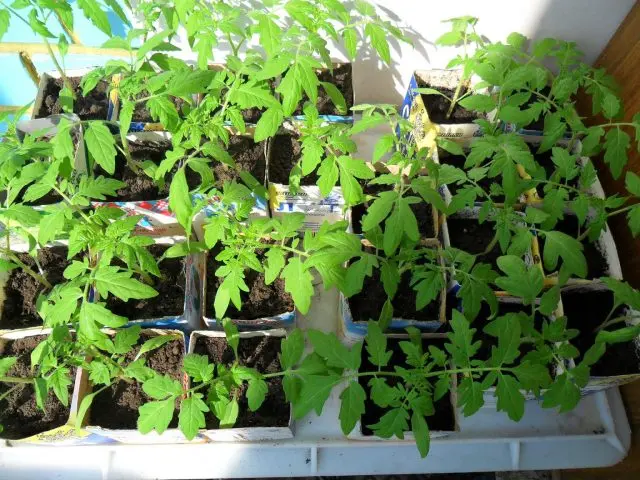
Plants are watered and carefully removed from containers. They try not to break the earthen ball. Then the tomatoes are transferred to the hole, the roots are covered with earth and compacted. The final stage is abundant watering of tomatoes. The first time after planting, the tomatoes are not watered or fed. From the hot sun they are covered with paper caps.
Care of tomatoes
Tomatoes Volgogradets respond positively to care. Plants are watered 1-2 times a week. Do not allow the soil to dry out or a crust to appear on it. Be sure to use warm water. It is best to water tomatoes in the evening.
After watering, loosen the soil so that moisture is better absorbed. Mulching helps reduce watering. A layer of straw or humus is poured under the plants, which prevents the evaporation of moisture.
Top dressing is necessary for Volgogradets tomatoes during the entire growing season:
- 10 days after landing in the ground;
- when flowering;
- during fruit ripening.
For the first dressings of the Volgogradets variety, an infusion of chicken manure 1:10 or slurry 1:5 is used. Fertilizer is poured under the root of the plants. 5 g of ammonium nitrate and 15 g of superphosphate are also embedded in the soil, after which moisture is added. Feeding wood ash is also effective. Add 200 g of this fertilizer to a bucket of water and water the tomatoes.
So that the tomatoes of the Volgogradets variety do not bend under the weight of the fruit, it is recommended to tie them to a support. Use wooden planks or metal pipes. Easy to use tapestry. To do this, stakes are driven in every 3 m and strings are pulled between them. Bushes are tied up in 2 – 3 stages as they grow.
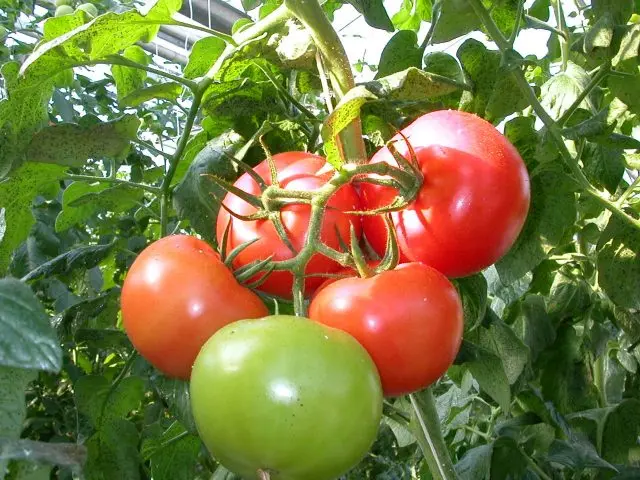
Conclusion
Tomato Volgogradets is a worthy variety for the middle lane and colder regions of Our Country. The hybrid has good taste, is stored for a long time, is universal in use. When growing a variety, it is important to protect it from fungal diseases.
Reviews
